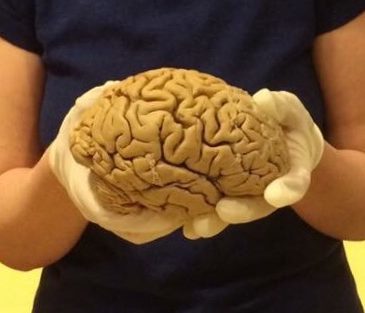I only started to really practice meditation just a few weeks ago, though I consider my yoga practice to be a type of meditation in and of itself. From everything I’ve read about meditation (and personally experienced), it is a highly effective, relatively easily implemented strategy for reducing stress, improving health, and relieving depression and anxiety. Basically, I think meditation is amazing. Meanwhile, my mom (and many others I’m sure) thinks that it is a form of mind control (like in the bad, brainwashing type of way) or at a minimum, could be used as religious indoctrination.
I am a special education teacher and am hoping to implement a small meditation program at my school; so I wonder, will I be able to convince the parents that I’m not brainwashing their children?
Another concern I think parents and community members may have is that they might think meditation is a waste of time – that students should be learning math or English or science. But my students would tell you, I am not a teacher who allows them to waste time. I do my best to effectively utilize every minute of the school day because I realize just how important a good education is to my students’ future success and happiness. I get it. However, we have to take into account that many students come to us unprepared to learn. They are hungry. They are tired. They are pre-occupied with various stressors and traumas that have happened to them in the past 15 hours, 15 days, 15 months, 15 years.
You may have heard of the ACE study which compiled data from more than 17,000 participants in the 1990’s and found that adverse childhood experiences “are major risk factors for the leading causes of illness and death as well as poor quality of life in the United States.” In my previous career, I worked with teenagers in foster care, arguably the most traumatized population in the United States. I definitely saw the ACE study play out in these kids’ lives as they repeatedly were suspended from school, brought “home” failing grades that no one looked at anyhow, complained of various health ailments, and exploded with rage at the drop of a pin.
When we are in a stressful situation, our bodies go through a lot of physical changes. Stress “produces emotions like fear and anxiety, as well as physical reactions, including increased blood pressure and heart rate, clammy skin, and a dry mouth. Other bodily reactions to stress are less evident: hormones are secreted, neurotransmitters are activated, and inflammatory proteins surge through the bloodstream.” This defense system is helpful to us during short-term stressors, but can cause lasting negative effects if the system remains activated for prolonged periods of time. For example, when a child lives in a home where there is violence or hunger or neglect, the child’s stress levels never have a chance to go down. They are continually activated, which essentially leads to the system being more easily activated in the future. This is why kids (and adults) may punch someone or something over a situation that the rest of us view as trivial. When your body is already on alert, your response system is going to be heightened. Consider if you repeatedly stubbed your toe, even a sock or a shoe might irritate the damaged skin and tissue. But someone who doesn’t have a stubbed toe wouldn’t understand why you are crying over a sock touching your toe. Luckily, if you can avoid stubbing your toe for a while, it will heal, and your toe will eventually feel normal – and your overreaction to socks will dissipate. However, if you stubbed your toe every day for years, you would likely have life-long damage that would affect you forever.
“…researchers like Bruce McEwen, a neuroendocrinologist at Rockefeller University, and Frances Champagne, a neuroscientist at Columbia University, have shown that repeated, full-scale activation of this stress system, especially in early childhood, can lead to deep physical changes. Michael Meaney, a neurobiologist at McGill University, and his colleagues have found that early adversity actually alters the chemistry of DNA in the brain, through a process called methylation. Traumatic experiences can cause tiny chemical markers called methyl groups to affix themselves to genes that govern the production of stress-hormone receptors in the brain. This process disables these genes, preventing the brain from properly regulating its response to stress.”
As I was reading through this research through the lens of being a special education teacher, I immediately began to wonder how many of my students have experienced or are experiencing trauma or prolonged stress. I haven’t seen any large-scale studies on this, but preliminary research shows that there is a “strong correlation between ACE scores and problems in school. In a paper that Burke and several co-authors will soon publish in Child Abuse & Neglect, they report that just three per cent of her patients with an ACEscore of 0 display learning or behavioral problems. Among patients with an ACEscore of 4 or higher, the figure is fifty-one per cent.” In other words, the students I serve in special education have most likely experienced serious trauma – and oftentimes, a lot of it. Though we still need to be cautious and recognize that this research is preliminary and does not show causation in either direction. Further, it’s important to remember that there are also always going to be students in special education who have not experienced trauma (at least not anymore than is typical for children and teenagers). But the kids who are coming to us with a history of trauma, may need a little extra care and understanding.
While I definitely want to see more research in this area, this initial research makes a lot of sense. We’ve already talked about how kids and adults might act more impulsively when their stress defense system has been repeatedly activated over long periods of time. And along the same lines, students who are preoccupied with issues occurring outside of school will not be able to engage in learning in the classroom simply because their minds are elsewhere.
I’ve only brushed the surface of the research that is out there in regards to stress response, but suffice to say that our schools and our students are highly impacted by traumatic events. We could spend every minute of the school day trying to cram more information into their brains, but if they aren’t engaged – if they are preoccupied and impulsive – we are going to fail at teaching them anything.
If we want to improve educational outcomes,
we have to address adverse childhood experiences.
One of the answers I see is meditation. A lot of schools have implemented a variety of programs in response to these issues, but meditation seems to be the most accessible and the easiest to start. In my class this year, I started teaching my students breathing exercises (aka meditation) prior to testing in my class. Recognizing that a lot of students (especially in Special Ed) experience test anxiety, I decided to have my students take a couple of minutes prior to testing to focus on their breath and “let go of their stress.” I hadn’t even started thinking about the ACE study when I started doing this earlier this year (although I was well aware of the study) or how meditation might counteract a larger problem that just test anxiety. Regardless of my reasoning, though, it seems to have been beneficial to my students (and me!) even in just the few times that we have done it.
Even though my class is comprised of students with learning disabilities, autism, and AD/HD, during meditation, they sit, silently, and breathe. While it surprises me every time, I’ve really seen meditation to be helpful in setting a positive mood (and a quiet, reflective one) for a good testing or learning environment.
This taste of success led me to start researching a more in-depth meditation program that I could implement with the students – and maybe even branch out to more students outside of my classroom. But when my mom questioned me on the entire premise of a meditation program, I started looking for more research to back up my idea. My preliminary search turned up quite a few articles and videos about schools that have done this. In San Francisco, they have a school-wide “Quiet Time” for 15 minutes, twice a day. Students may elect to participate in the meditation, or they may silently color or read. Who doesn’t love that? The results seem to be pretty impressive as well, reducing suspensions by 79% and improving attendance and academics.
But apparently a lot of people, like my mom, are still apprehensive about meditation. I can certainly see where they are coming from, and I knew from the start that a meditation program would surely encounter some resistance and fear. But I guess, I’m curious if anyone else has some input on this?
Would you be supportive of a meditation program at your child’s school or at your own school? Would you demand to see any materials that might be used in the program or words that might be said during the meditation? What sort of resistance/arguments do you think I should expect?
P.S. My mom reads this blog, and I love her, we just have differing opinions on this. 🙂
Photo credit: C. P. Lesley


Leave a comment